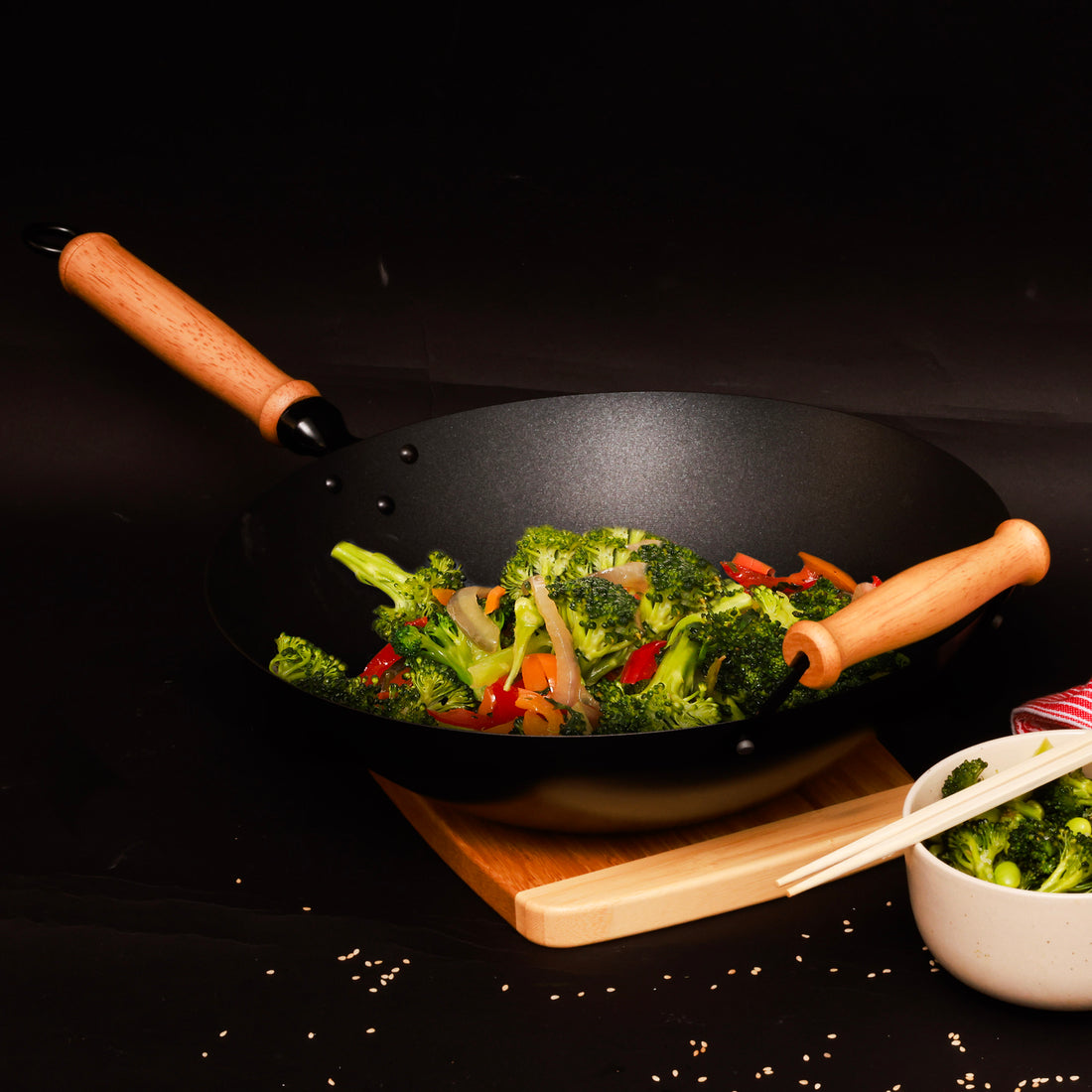If Alton Brown taught us anything, it’s not to stock our kitchens with “unitaskers.” Never waste your money and precious kitchen storage space on items that only perform one specific function. You might recall this lesson while considering a wok purchase, but rest assured, your unitasker-concerns are unfounded. The wok is one of the most versatile tools in any kitchen. When used to its full potential, this pan can be used for far more than just stir-fries.
Woks come in different sizes and both round-bottoms and flat-bottoms. They also come in a few different materials, the most popular of which is carbon steel. A nicely seasoned and well-made wok, such as this line from Joyce Chen, can serve as something of a hybrid cooking vessel. A wok is a combo pot and frying pan for many types of cooking. Its ability to heat up quickly and distribute heat evenly makes it great for pan frying. Additionally, a wok’s depth and wide sides allow it to hold liquid or oil.
Stir-Fry Star
Woks are intended to be a versatile cooking tool, but of course they really shine when it comes to stir-fries. The sloped sides mean that the bite-size pieces of food can be pushed up on the less-hot sides to prevent over cooking while other pieces are still cooking. The larger volume of a wok means that the food can be tossed and stirred often to prevent scorching.
Multi-Talented Wok Star
Braising is another easy way to use a wok. Lightly searing and then cooking tougher and less expensive cuts of meat in a savory sauce is a great way to extend a food budget. The wok is a wonderful way to make any braised meat a one-pot meal.
As mentioned above, a wok is more than just cookware for Asian cuisine. Many home chefs find the wok to be a superior vessel for deep frying. Though the wok may take more oil than a cast-iron pan or Dutch oven, its wide opening catches more spatter making the experience less messy. Also, the shape of the wok reduces the likelihood of boil-over and allows for better access to the food for utensils.
Another notch of the wok cooking versatility belt is pan-frying. Woks heat up quickly and food is easy to move around in them. Many cooks reach for a wok for sautéing vegetables, browning meat, or searing larger cuts of meat for roasting. While a wok will not eliminate the use of a frying pan, it can help reduce the need for extra pans when making a meal.
With either a bamboo steamer or a mesh, metal steamer, woks are also great for steaming. The shape of the wok allows the water for steaming to pool at the bottom while the steamed food can be made in abundance in the rest of the pan. The domed cover that comes with a wok allows for ample room and circulation.
The wok’s unique shape and construction gives it more versatility than any other pan in your kitchen. Its ability to fry, sauté, deep fry, steam, boil, and braise will make it a tool that you will reach for again and again. Take care of your wok and it can serve up meal after diverse meal for decades to come.
Happy wokking!
